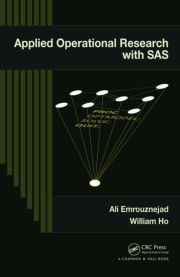Figure l shows a set of units P1, P2,… P6 with each unit consuming the same amount of a single resource and producing different amounts of outputs, y1 and y2 as shown. For a given amount of resource input, units providing greater amounts of the outputs will be the efficient ones. Applying the DEA approach to this set of units will identify units P1, P2, P3 and P4 as efficient and they provide an envelope round the entire data set units P5 and P6 are within this envelope and are inefficient. The data envelope has been notionally extended to the axes by the lines P1y2′ and P4y1′ to enclose the data set.
For unit P5 the peer group consists of the units P1 and P2 and a set of targets for P5 is provided at P5′. These targets are obtained by a pro rata increase in the outputs of unit P5. Clearly there are other possible targets for P5 and for example if the output level Y2 could not be increased for P5 then a target P5″ could be set which would rely entirely on increasing output y1. For unit P6 the pro rata increase leads to the set of targets P6′. However P6′ is clearly dominated by P4 which produces the same amount of output y1 but more output y2. In this case the pro rata increase needs to be

supplemented by a further increase in the output of y2 to provide an efficient target. Returning to unit P5 the set of targets P5 can be obtained from a weighted average of the peer units P1 and P2. Thus P5 can be thought of as a composite unit made up of a weighted average of the peer units and this composite unit provides a target for the inefficient unit.














